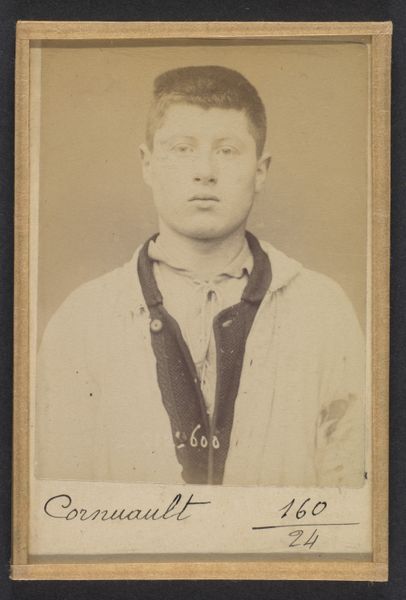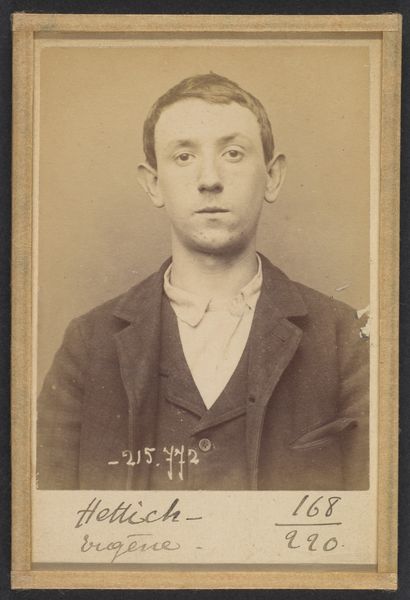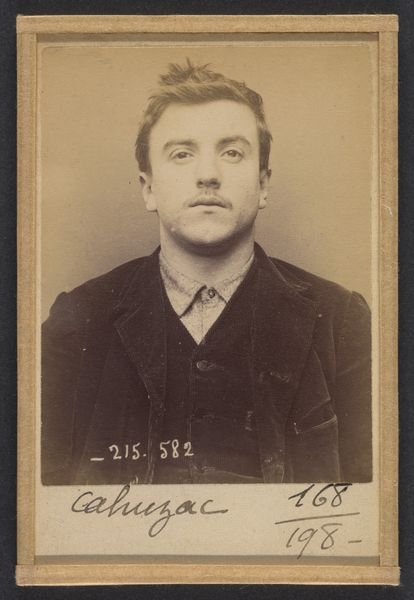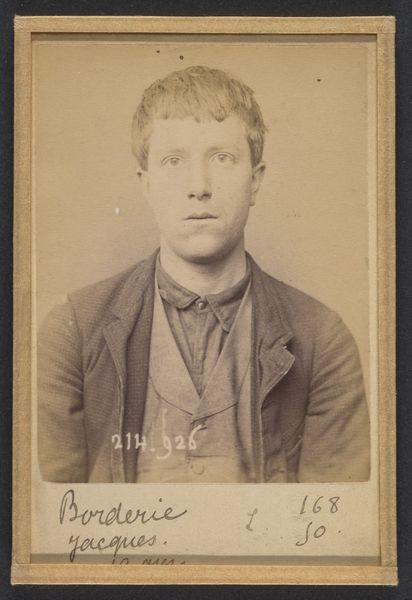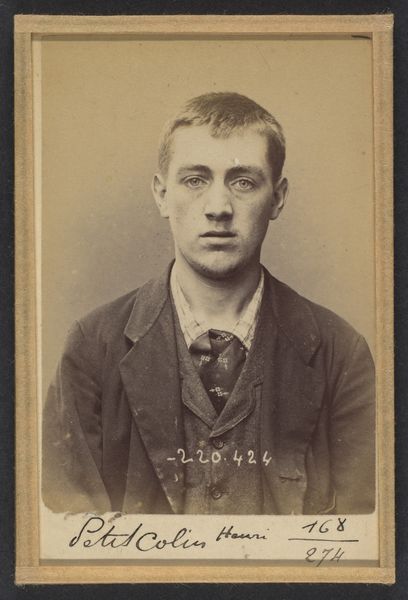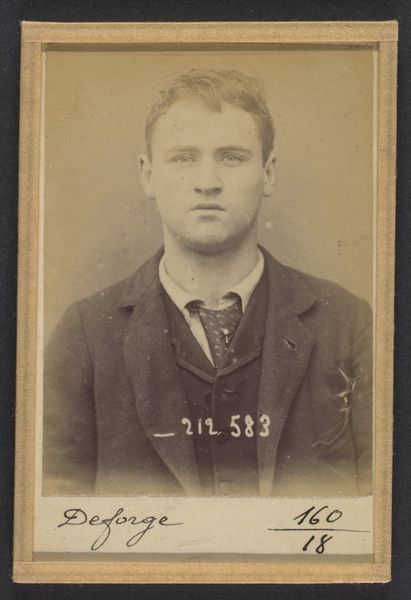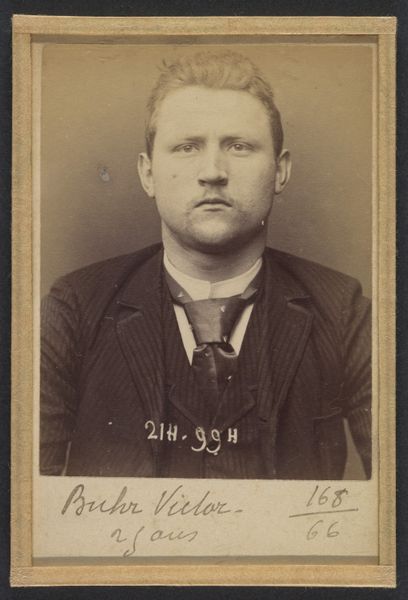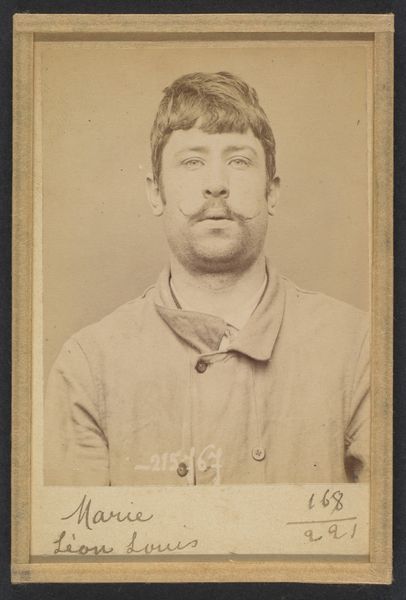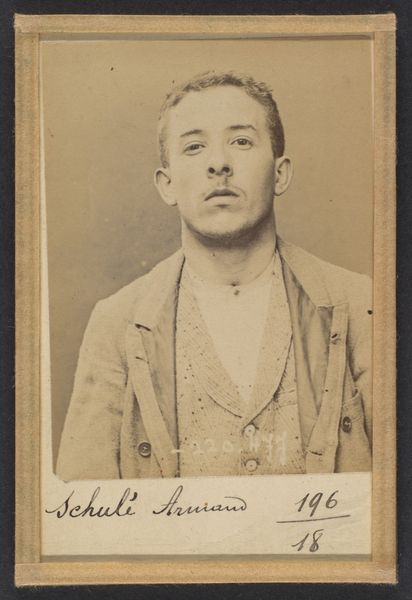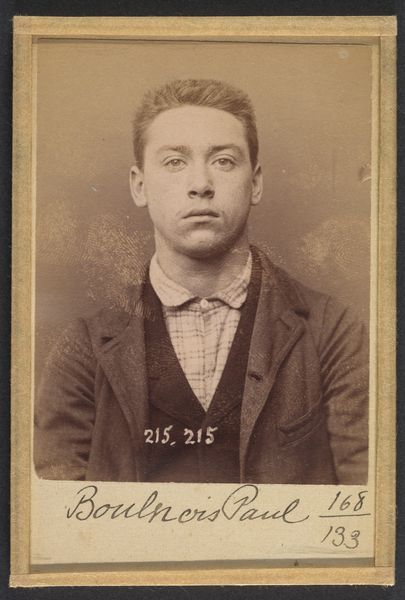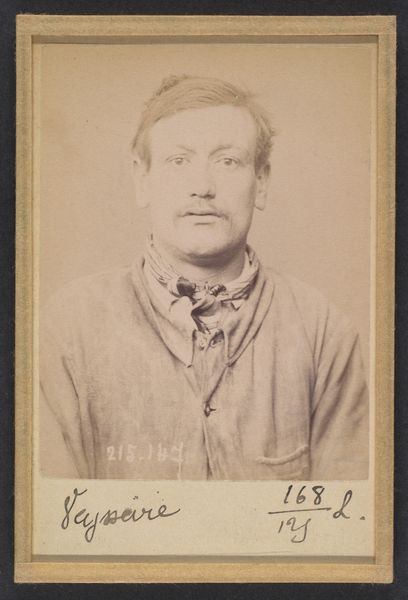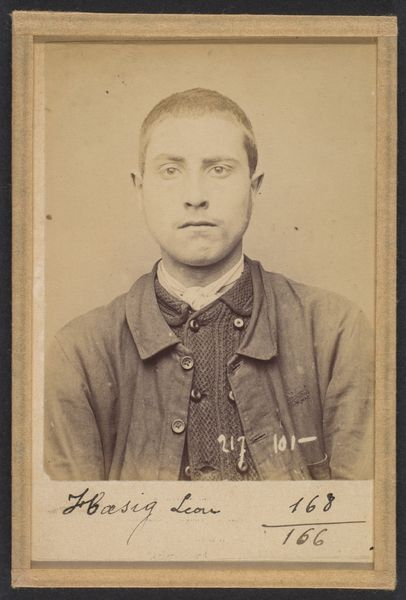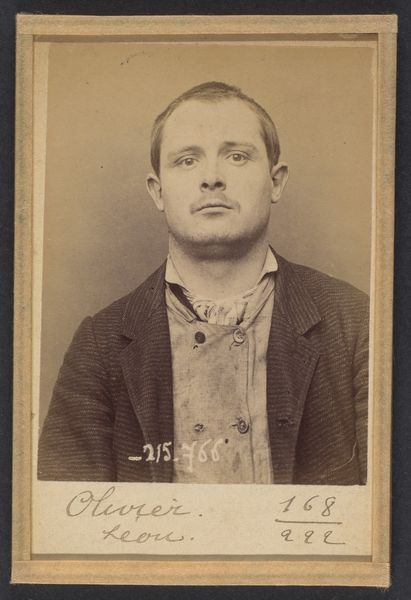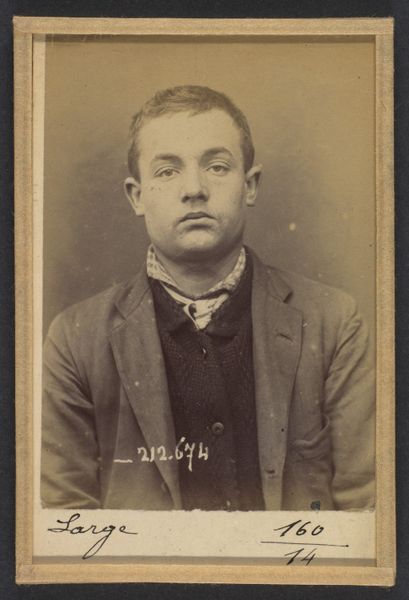
Cana. Eugène, Louis. 22 ans, né à Paris Vllle. Monteur en bronze. Anarchiste. 2/3/94. 1894
0:00
0:00
photography, gelatin-silver-print
#
portrait
#
portrait
#
neo-impressionism
#
photography
#
gelatin-silver-print
#
men
#
realism
Dimensions: 10.5 x 7 x 0.5 cm (4 1/8 x 2 3/4 x 3/16 in.) each
Copyright: Public Domain
Curator: Alphonse Bertillon's gelatin silver print, "Cana. Eugène, Louis. 22 ans, né à Paris Vllle. Monteur en bronze. Anarchiste. 2/3/94," made in 1894, captures the subject in stark detail. What is your initial read? Editor: A profound sense of resignation pervades this image. His eyes, though fixed forward, hold a certain vulnerability, a quiet acceptance of his fate. The sepia tones only amplify the solemn mood. Curator: Indeed. The print, part of Bertillon's larger project to standardize criminal identification, hinges on objectivity. Consider the flattening effect of the direct lighting and the frontal pose. There's a conscious effort to eliminate artistic interpretation in favor of scientific documentation. The writing just beneath his figure emphasizes his identity, as labeled by the authorities. Editor: But the humanity refuses to be entirely erased. The very details you mention—the stark light, the frontal pose—become elements that inadvertently underscore his individual experience within a system designed to categorize and dehumanize. We can even gather details about his economic status from his somewhat worn blazer and visible button-down. What's more, that Bertillon felt the need to add “anarchiste” betrays the political anxieties of the time. Curator: A valid point. The inscription undeniably infuses a layer of societal prejudice. However, it also highlights the photograph's function as a signifier within a specific framework of law and order. Observe how Bertillon employs the photographic medium to serve the state’s interest in surveillance and control. Editor: Absolutely, the piece lays bare the complex intersections of identity, politics, and power. The subject, Eugène, becomes both an individual and a symbol—a representation of the era's social anxieties and the state's methods of control. It makes one consider how such photographic archives implicate our contemporary modes of data collection. Curator: Precisely. The brilliance of Bertillon's photograph is how it unveils these interwoven concepts, making us contemplate the role of art in recording, reinforcing, and possibly questioning societal structures. Editor: For me, this piece offers a chilling meditation on the individual versus the system. I’m left pondering questions about social justice and the legacy of surveillance today.
Comments
No comments
Be the first to comment and join the conversation on the ultimate creative platform.
